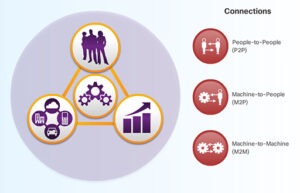Simplifying MPTLW: A Comprehensive Guide to Modern Portfolio Theory in Plain English
Introduction
Modern Portfolio Theory and the Capital Asset Pricing Model (CAPM) have long been cornerstones of investment analysis and portfolio management. Yet, for many, the complex jargon and mathematical intricacies associated with these concepts can seem daunting. In this guide, we aim to demystify the MPTLW (Modern Portfolio Theory with Labor Wealth) framework, breaking down its principles, applications, and implications in straightforward, accessible language.
Understanding MPTLW: The Basics
Defining MPTLW
At its core, MPTLW is an extension of Modern Portfolio Theory (MPT) that incorporates not only financial assets but also human capital or labor wealth into the portfolio construction process. Traditional MPT focuses solely on the risk-return tradeoff of financial assets, aiming to optimize portfolio returns for a given level of risk. MPTLW broadens this perspective by recognizing that individuals derive a significant portion of their wealth from their careers or labor income. You can also read The Power of Motivational Treatment in Achieving Personal Growth
The Role of Labor Wealth
Labor wealth refers to the present value of an individual’s future earnings from employment. Unlike financial assets, which can be bought and sold in the market, labor wealth is unique to each individual and is influenced by factors such as education, skills, experience, and job market conditions. Integrating labor wealth into portfolio analysis allows investors to better assess their overall financial situation and make more informed decisions.
Principles of MPTLW
1. Diversification
Diversification is a fundamental concept in MPTLW, as it is in traditional MPT. The goal is to spread investment across different asset classes to reduce the overall risk of the portfolio. However, in MPTLW, diversification goes beyond financial assets to include human capital. By diversifying not only investments but also career paths, skills, and income streams, individuals can mitigate the risk associated with changes in the job market or industry downturns.
2. Asset Allocation
Asset allocation involves determining the optimal mix of assets based on their expected returns, volatility, and correlations. In MPTLW, asset allocation considers both financial assets and human capital. For instance, a young professional with a stable job and high earning potential may allocate a larger portion of their portfolio to riskier assets such as stocks, while someone closer to retirement may prioritize preserving their labor wealth by investing in less volatile assets like bonds or real estate.
3. Risk Management
Risk management is paramount in MPTLW, given its emphasis on protecting labor wealth in addition to financial assets. Strategies such as hedging, insurance, and income diversification can help mitigate various risks, including unemployment, disability, and inflation. Moreover, periodic reassessment and adjustment of the portfolio are essential to ensure alignment with changing life circumstances and financial goals.
Applications of MPTLW
1. Retirement Planning
MPTLW provides valuable insights into retirement planning by considering the dual nature of wealth accumulation—financial assets and labor income. By optimizing the allocation of resources between retirement accounts, such as 401(k)s and IRAs, and human capital investments, individuals can better prepare for retirement and achieve their desired lifestyle goals.
2. Career Management
In today’s dynamic job market, career management is increasingly akin to portfolio management. MPTLW encourages individuals to invest in their human capital through education, training, and skill development to enhance their earning potential and job market resilience. Moreover, understanding the risk-return profile of different career paths can guide strategic decisions such as job changes, industry shifts, or entrepreneurship endeavors.
3. Wealth Preservation
Preserving wealth requires a comprehensive approach that considers both financial assets and labor income. MPTLW advocates for strategies that balance growth opportunities with risk mitigation to safeguard against unforeseen events and economic fluctuations. By diversifying income sources and maintaining a resilient portfolio, individuals can protect their standard of living and achieve long-term financial security.
Conclusion
In conclusion, MPTLW offers a holistic framework for portfolio management that integrates traditional investment principles with the unique characteristics of human capital. By recognizing the significance of labor wealth alongside financial assets, individuals can make more informed decisions to optimize their overall financial well-being. While the concepts of MPTLW may initially seem complex, their practical applications can be understood and applied by anyone seeking to build and preserve wealth in today’s dynamic economic landscape.














Post Comment